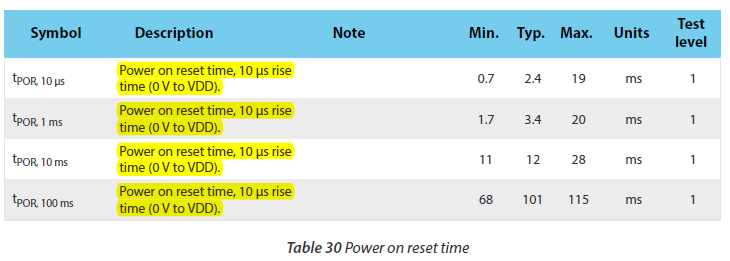Hi Team,
about power on reset time, not very clear about the description in the SP3.1 as in the attached picture,
 why the description are the same?
what's the difference between tPOR,10us / tPOR,1ms /tPOR,10ms /tPOR,100ms
why the description are the same?
what's the difference between tPOR,10us / tPOR,1ms /tPOR,10ms /tPOR,100ms
thanks, vincent
Hi Team,
about power on reset time, not very clear about the description in the SP3.1 as in the attached picture,
 why the description are the same?
what's the difference between tPOR,10us / tPOR,1ms /tPOR,10ms /tPOR,100ms
why the description are the same?
what's the difference between tPOR,10us / tPOR,1ms /tPOR,10ms /tPOR,100ms
thanks, vincent
Hi, thanks,
thanks, vincent
Hi, thanks,
thanks, vincent